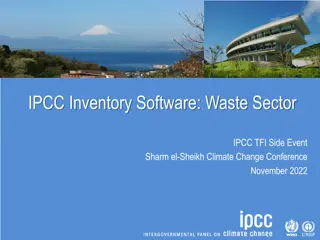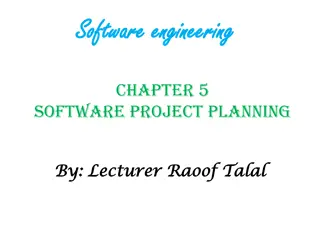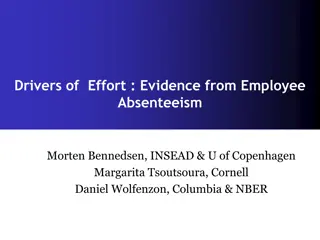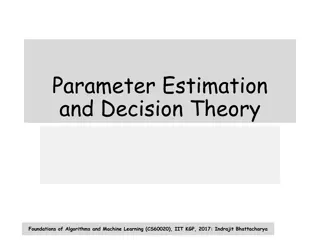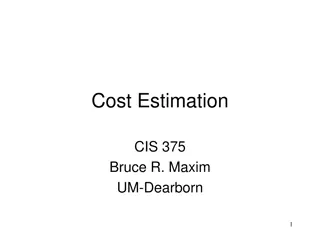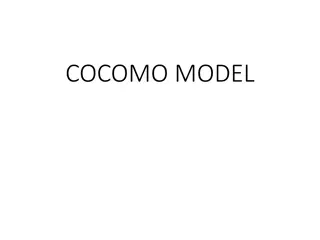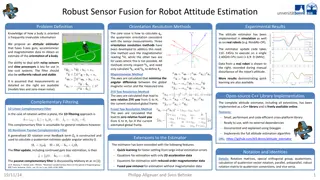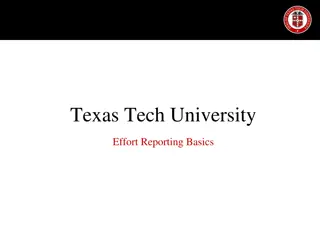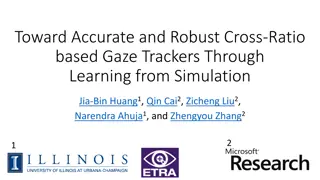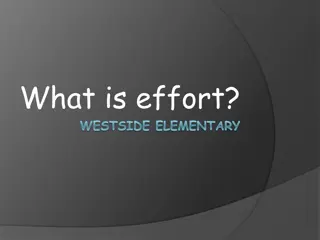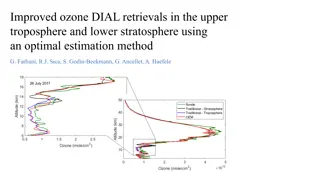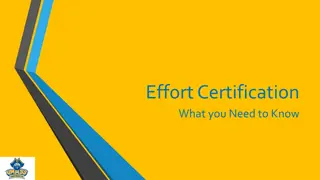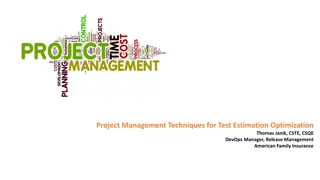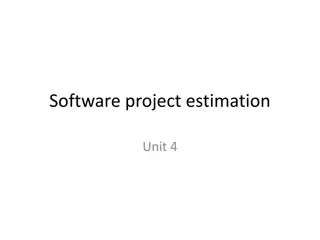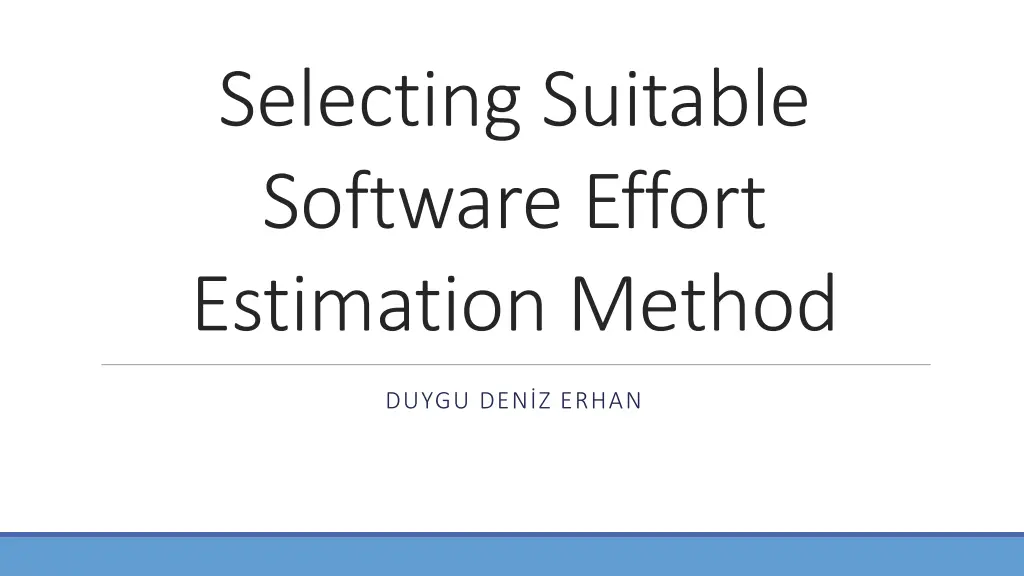
Selecting the Best Software Effort Estimation Method
Explore the process of choosing the most suitable software effort estimation method for a project based on project characteristics and stakeholder needs. Discover various alternative estimation methods, related studies, and criteria to enhance accuracy in estimating software project efforts.
Download Presentation

Please find below an Image/Link to download the presentation.
The content on the website is provided AS IS for your information and personal use only. It may not be sold, licensed, or shared on other websites without obtaining consent from the author. If you encounter any issues during the download, it is possible that the publisher has removed the file from their server.
You are allowed to download the files provided on this website for personal or commercial use, subject to the condition that they are used lawfully. All files are the property of their respective owners.
The content on the website is provided AS IS for your information and personal use only. It may not be sold, licensed, or shared on other websites without obtaining consent from the author.
E N D
Presentation Transcript
Selecting Suitable Software Effort Estimation Method DUYGU DEN Z ERHAN
Outline Outline Introduction Purpose Related studies Alternatives and criteria for effort estimation methods Expert-opinion survey Estimator questionnaire Decision matrix Example evaluation Future work Conclusion 2
Introduction Introduction The reliability of the effort estimation of a project choice of the most appropriate method project characteristics and the estimation context The approach for selecting the most suitable estimation method for a software project considering the project characteristics and the stakeholder needs 3
Related Studies Related Studies Studies that examine and classify methods, studies that investigate the criteria of various parameters that affect the methods. Systematic literature review of machine learning based software development effort estimation models.(2012) Analogy-based software development effort estimation: A systematic mapping and review.(2015) A Survey on Software Cost Estimation Techniques. (2019) Studies that associate SEE method selection with various criteria. Multi-criteria decision making approach for the selection of software effort estimation model. (2017) Automated selection of a software effort estimation model based on accuracy and uncertainty. (2015) 4
Purpose Purpose Providing estimators with a vehicle in selecting the best fit software effort estimation method to enable more accurate effort estimation of software projects. An evaluation approach based on Multi-Criteria Decision Analysis was created Expert opinion survey Questionnaire Decision matrix Sample study 5
Alternative Estimation Methods Alternative Estimation Methods Neural Networks (NN) Case-Base Reasoning Linear Regression (LR) Analogy Based (AB) Expert Judgement (EJ) Support Vector Regression (SVR) Decision Trees (DT) Bayesian Networks (BN) 6
Criteria Criteria Approach to construct method Data characteristics Data quality Method characteristics Project context The experts who answered the expert-opinion survey were asked to add the criteria that they thought would affect the choice of the method and to add further methods that should be considered if any. 7
Criteria Criteria Table 1. Criteria and related estimator questionnaire 8
Expert Expert- -Opinion Survey Opinion Survey Collects the necessary data to specify the characteristics of the effort estimation methods. Based on the key features of the commonly used estimation methods. Consisted of questions that allowed us to determine the weight of criteria for the estimation methods. Answered by experts who carried out scientific studies in the field of software effort estimation. 9
Experts Information Experts Information 1. Year of expertise in SEE of the experts 2. Organization types of the experts 10
QT1: Please select the convenient option on Approach to Construct the SEE method with the below methods. QT2: To what extent do you think the following methods are interpretable by its users in SEE? QT3: Do you think that iteration in software development life cycle is an affecting factor in SEE with the following methods? Expert Expert Expert- -Opinion Survey Opinion Survey Survey has three different question types; E1 Based on human judgement Low Yes E2 Based on human judgement High Yes List selection (QT1) Ranking on Likert scale (QT2) Yes/No selection (QT3) E3 Can address both Very Low Yes E4 Based on human judgement Average Yes E5 Based on human judgement Very High Yes E6 Based on human judgement E7 Based on human judgement High Yes E8 Based on human judgement High No Table 2. Answers to three types of questions for Expert Judgment estimation method 11
Estimator Questionnaire Estimator Questionnaire Questionnaire was derived from expert-opinion survey. The questionnaire is intended for use by a project staff who holds the role of an estimator and wants to carry out effort estimation in his/her project accurately. The expert-opinion survey was filled once by the experts and a decision matrix was prepared from it. The estimator can use decision matrix in order to select the most suitable estimation method for his/her need by answering a number of estimator questions. 12
Decision Matrix Decision Matrix In column Rating, the weights calculated from the expert-opinion survey. Ta ble 3. Decision Matrix 13
Example Evaluation Example Evaluation An evaluation approach based on Multi-Criteria Decision Analysis was created to select the most suitable software effort estimation method. The questionnaire was answered using the ISBSG data set and a number of assumptions regarding the example estimation. (Reason column) The questions were answered as 1 for yes and 0 for no, in accordance with the estimation context. After entering estimator responses, method scores were calculated using the rating values in the decision matrix. 14
Example Evaluation Example Evaluation The method with a higher score is more suitable for estimation. 15
Example Evaluation Example Evaluation - -Results Results According to the decision matrix prepared with our approach, the most suitable effort estimation model with a score of 6.26 is the Neural Network (NN) method and then the Case Base Reasoning (CBR) method with a score of 6.20. Although in some of these studies it is reported that methods other than NN and CBR give more accurate results, there are also studies that contain results that support the selection of these methods as suggested by our study. Therefore, we can say that the results obtained by our proposed approach in the sample evaluation is partially supported with the results and suggestions of studies in the latter group. 16
Future Work Future Work The majority of the experts who answered the expert-opinion survey are from the university. In future studies, reaching the experience of the people working in this field in the industry will increase the value of the expert-opinion survey results. The scope of the study can be expanded by analyzing the effort estimation methods and features that are commonly used in the industry. 17
Conclusion Conclusion The approach aims to assist users in choosing the most suitable estimation method in the targeted estimation context. Identifying the distinctive criteria for software effort estimation methods. Using the criterias, we prepared an expert-opinion survey to take the opinions of the experts in SEE. A questionnaire was prepared to be answered by the estimator. A decision matrix was prepared with the questionnaire and calculated rating values from the survey. The user would be able to see the accuracy scores of the estimation methods on the decision matrix by answering the questionnaire. This method selection is partially supported with the results of the studies in the literature, and there is a need for further studies to validate the results of the evaluation approach. 18
Questions..? Questions..? 19
Expert Expert- -Opinion Survey Opinion Survey QT1. Do you want your method be dependent on data? (EQ1) and Do you want to address human judgement? (EQ2) questions were created of QT1 from the expert-opinion survey result. While determining the weight of EQ1 (WEQ1), the number of Dependent on data and Can address both answers given was divided by the num-ber of all answers to EQ1. Similarly, weight of EQ2 (WEQ2) was determined by dividing the number of Based on human judgment and Can address both responses by the number of all responses to EQ2. WEQ1 = Count (Dependent on data) + Count (Can address both) / Count (All EQ1 answers) WEQ1 = (0 + 1) / 8 WEQ1 = 0.13 WEQ2 = (Count (Based on human judgement) + Count (Can address both)) / Count (All EQ2 answers) WEQ2 = (7 + 1) / 8 WEQ2 = 1 QT2. The question Is it important that SEE method has high interpretability? (EQ12) was created of QT2 from the expert-opinion survey result. When determining the weight of EQ12, values in range [1-5] were assigned for the answers in range [Low-Very High]. Total weight of EQ12 (WTotal-EQ12) was calculated by summing the product of each answer (in [1-5]) by the determined weight value which was taken as the number of that answer given. Weighted sum of EQ12 (WEQ12) was determined by dividing the total weight of EQ12 (WTotal-EQ12) by the sum of all EQ12 responses multiplied by the maximum weight value of 5. WTotal-EQ12 = 1 x Count (Very Low) + 2 x Count (Low) + 3 x Count (Average) + 4 x Count (High) + 5 x Count (Very High) WTotal-EQ12 = 1 x 1 + 2 x 1 + 3 x 1 + 4 x 3 + 5 x 1 WTotal-EQ12 = 23 WEQ12 = WTotal-EQ12 / (Count (All EQ12 answers) x 5) WEQ12 = 23 / (7 x 5) WEQ12 = 0.66 QT3. The question Do you prefer iteration in software development life cycle? (EQ17) was created of QT3 from the expert-opinion survey result and its weight was determined by dividing the number of Yes answers by the number of all EQ13 answers. WEQ17 = Count (Yes) / Count (All QT3 answers) WEQ17 = 6 / 7 WEQ17 = 0.86 20



